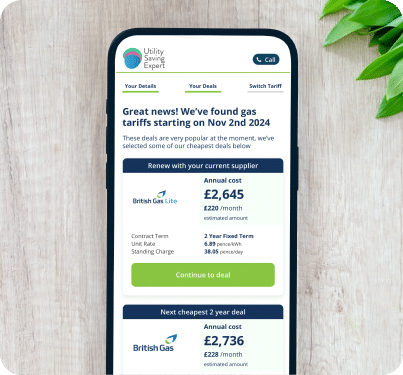Maximising Your Off-Peak Hours: A Guide to Saving on Business Energy Costs
In an era of mounting energy costs and increasing environmental concerns, UK businesses are facing the growing need for cost-effective energy solutions. Companies can reap significant rewards by maximising off-peak hours, striking a delicate balance between environmental responsibility and cost-saving measures.

Article Contents
Introduction: The Importance of Maximising Off-Peak Hours for UK Businesses
Optimising off-peak hours presents an ideal opportunity to reduce energy expenses, which often account for a substantial portion of a business’s overall expenditure. Embracing customised business energy plans tailored to your organisation’s needs allows for enhanced efficiency in energy consumption during low-demand periods. This ultimately leads to reduced energy costs and fosters a sustainable approach towards managing resources.
As the world shifts towards environmentally conscious practices, it’s vital for businesses to adapt their strategies accordingly. Using off-peak hours not only alleviates financial pressure but also minimises the environmental impact of energy-intensive operations, demonstrating a commitment to fiscal prudence and ecological stewardship.
Maximising off-peak hours is an essential strategy for UK businesses looking to navigate the complex landscape of energy management. Companies can achieve long-term savings without compromising their environmental responsibilities by employing customised energy plans that capitalise on this untapped potential. the time is now for businesses to take control of their energy usage and costs – harnessing the power of off-peak optimisation for a brighter, greener future.

Compare Business Energy Prices, Suppliers & Rates

Understanding Off-Peak Hours and Their Impact on Energy Costs
Off-peak hours – a term that’s seldom discussed yet holds immense significance for UK businesses striving to optimise energy costs and embrace environmental responsibility. But what exactly are off-peak hours, and how do they impact business electricity costs?
In essence, off-peak hours are periods when energy demand is at its lowest, leading to reduced tariffs offered by energy suppliers. These low-demand periods often occur during late evenings, nights, and weekends, in stark contrast to peak hours, when energy consumption is at its zenith. Energy suppliers determine off-peak hours based on historical data and consumer behaviour, ensuring that businesses can capitalise on these cost-effective intervals.
The correlation between off-peak hours and reduced energy costs is unequivocal: taking advantage of lower tariffs during these periods translates into significant savings for businesses. It’s a golden opportunity to strike a balance between cost efficiency and environmental responsibility.
Seasonal fluctuations further influence off-peak hours, with periods of low demand varying depending on factors like daylight hours, temperature changes, and weather conditions. By understanding these fluctuations and adapting accordingly, businesses can maximise the benefits of off-peak optimisation.
Comprehending the intricacies of off-peak hours is paramount for UK businesses seeking to reduce energy expenses while preserving an eco-conscious ethos. by implementing customised energy plans that account for seasonal variations and leveraging off-peak opportunities, companies can experience a tangible impact on both their bottom line and environmental footprint.
Customising Energy Plans for Peak Usage Times and Seasonal Fluctuations
In today’s fast-paced business environment, a tailored energy plan is not just a luxury – it’s an absolute necessity. Companies can achieve maximum efficiency and significant cost savings by identifying peak usage times and adapting to seasonal fluctuations.
So, how can businesses pinpoint their peak usage times? Data analysis is key. By closely examining historical energy consumption patterns, organisations can determine periods of increased demand and strategize accordingly. Once these peak hours are identified, practical strategies such as implementing energy-efficient equipment and scheduling high-energy tasks during off-peak hours can be employed to optimise energy usage.
But what about seasonal surges in usage? Crafting an energy plan that accommodates these fluctuations is crucial for seamless operations. For instance, increasing heating or cooling requirements during winter or summer months must be factored into the overall strategy to ensure stability and cost-effectiveness.
This is where the expertise of energy brokers and consultants comes in. These professionals possess invaluable knowledge in crafting customised energy plans that cater to your business’s unique needs. By considering factors such as operational schedules, industry-specific demands, and seasonal variations, they help you create a comprehensive plan that ensures optimal energy use throughout the year.
Customising your energy plans for peak usage times and seasonal fluctuations is essential for long-term success. harnessing the power of data analysis and expert guidance from energy brokers will empower your business to navigate the ever-changing landscape of energy management with confidence, paving the way for enhanced efficiency and reduced business gas and electricity costs.
Like what you’re reading? Get more in our monthly newsletter!
Get the latest news and articles straight to your inbox from Utility Saving Expert
Balancing Energy Load Across Multiple Locations
In the dynamic business world, managing energy consumption across multiple locations is paramount. Load levelling, also known as load balancing, is a critical strategy for companies with several sites to prevent any single location from being overburdened with energy costs.
A key benefit of load levelling is the overall reduction in energy expenses and improved efficiency. A well-designed plan can optimise each location’s energy use to meet its unique demands while decreasing the strain on the power grid.
Energy management systems (EMS) are indispensable tools that facilitate effective load balancing. These sophisticated systems monitor and control energy usage across various locations, enabling businesses to make informed decisions and adapt their strategies in real time. With an EMS in place, companies can better allocate resources and uphold responsive energy management practices.
Moreover, load levelling contributes to risk reduction by safeguarding against power outages and system failures caused by excessive demand on a single site. By distributing the energy load evenly across all locations, businesses can maintain steady operations and protect their assets from unexpected disruptions.
Balancing energy load across multiple locations is vital to efficient energy management. Businesses can effectively distribute their energy consumption and mitigate risks by employing tailored strategies and leveraging cutting-edge EMS technology while optimising costs. in an age where both financial prudence and environmental responsibility are crucial, embracing load levelling techniques can help your company stay ahead of the curve.
Embracing Renewable Energy Sources and Carbon Footprint Tracking
In this era of heightened environmental awareness, the demand for eco-friendly energy solutions has reached an all-time high. UK businesses are increasingly recognising the need to adopt renewable energy sources and conscientiously track their carbon footprints. Are you ready to embrace the green revolution?
Many renewable energy options await UK businesses: solar power, wind energy, biomass, and hydropower, each offering unique benefits. Incorporating these sustainable sources into your energy plans reduces dependence on fossil fuels and demonstrates a commitment to environmental responsibility.
But how can you ensure that your business is genuinely making a difference? Tracking your energy usage and carbon footprint is vital! By diligently monitoring the impact of your operations, you’ll gain valuable insight into areas where improvements can be made. This empowers informed decision-making and bolsters your company’s green credentials.
Imagine the profound effect of adopting renewable energy and carbon footprint tracking on your business. A reduced environmental impact, improved public perception and potential cost savings – it’s a win-win situation.
Conclusion: Achieving Long-Term Savings and Efficiency with Customised Energy Plans
In the ever-evolving business and energy management landscape, achieving long-term savings and efficiency hinges on embracing customised energy plans. The significance of striking a balance between environmental responsibility and cost-saving measures cannot be overstated, as it paves the way for businesses to stay competitive in a rapidly changing market.
Optimising off-peak hours and implementing tailored energy plans offer businesses an opportunity to flourish. By carefully monitoring energy usage, adapting to seasonal fluctuations, and incorporating renewable sources, companies can experience substantial long-term benefits. This strategic approach bolsters their bottom line and enhances their environmental stewardship.
The role of expert advice in this journey is indispensable. Energy brokers and consultants possess invaluable insights into crafting bespoke energy solutions that cater to your unique needs. Their guidance ensures that your business remains agile in the face of change while continually refining its energy management practices.
Moreover, ongoing monitoring of energy usage is crucial for informed decision-making. By diligently tracking consumption patterns and carbon footprints, organisations can confidently identify areas for improvement and drive future strategies. This proactive approach leads to greater efficiency, resilience, and sustainability – all essential elements in maintaining an edge over competitors.
Investing in customised energy plans is no longer a luxury but rather a necessity for businesses aiming for long-term success. embracing this approach enables companies to enhance their efficiency, reduce costs, and fulfil their environmental obligations simultaneously.
Determining your business’s peak usage times and off-peak hours is crucial for maximising efficiency and reducing energy costs. By closely examining historical energy consumption patterns, you can pinpoint periods of increased demand and strategise accordingly.
Start by collating historical energy data from your utility provider, preferably for the past 12 months or more. Then, analyse this information to identify trends in usage, such as recurrent spikes during specific hours, days, or even seasons. Remember, knowledge is power – the more data you have, the clearer the picture will be.
Harnessing state-of-the-art visualisation tools can aid in interpreting complex data sets and transforming raw figures into easily digestible graphs and charts. As you delve deeper into the analysis, patterns will emerge, revealing that critical peak and off-peak hours that hold the key to unlocking energy savings.
Don’t forget to consider external factors that may impact your energy usages, such as weather conditions, business growth, or changes in operational processes. These variables can significantly influence your consumption patterns and should be factored into your analysis.
Once you’ve identified your peak usage times and off-peak hours, seize this golden opportunity to optimise your energy management strategy. For example, reallocate high-energy tasks to off-peak periods or invest in energy-efficient equipment to alleviate pressure during peak times.
Finally, remember that tracking and monitoring are essential to successful energy management. Regularly review your consumption patterns to ensure continued optimisation and adaptability in a rapidly changing market.
Customising your energy plan based on peak usage times and seasonal fluctuations unlocks a treasure trove of benefits for your business. Imagine slashing costs, boosting efficiency, and embracing sustainability – all by simply tailoring your energy strategy to match the ebb and flow of demand.
Primarily, cost reduction is the cornerstone of success for any business. By identifying peak usage times and adjusting operations accordingly, you can optimise energy consumption to take advantage of lower tariffs during off-peak hours. The result? Significant savings that bolster your bottom line.
Next, we delve into the realm of efficiency enhancement. A bespoke energy plan allows your business to respond nimbly to fluctuating demand, ensuring resources are allocated effectively in real time. This dynamic approach reduces wastage and paves the way for streamlined operations.
But it does not end there! Embracing a customised energy plan also signals your commitment to environmental responsibility. By aligning your strategy with seasonal fluctuations, you minimise the strain on the power grid and reduce greenhouse gas emissions – a nod to sustainable business practices that resonate with eco-conscious consumers.
Lastly, consider the competitive advantage gained through strategic energy planning. In an ever-evolving marketplace, businesses that adapt seamlessly to change are more likely to thrive. A tailored energy plan helps you stay ahead of the curve, ready to capitalise on opportunities as they arise.
Imagine the power of load levelling, a strategic energy management technique that can revolutionise your business’s approach to reducing energy costs across multiple locations. Are you ready to unlock the potential of this ingenious method?
Load levelling, also known as demand-side management or load shifting, is the act of redistributing energy consumption during peak usage times to off-peak hours. By doing so, you can achieve significant savings on utility bills and optimise energy efficiency across all your business locations.
The key benefits of implementing load levelling are manifold. First, your business can capitalise on lower electricity rates by adjusting operations to accommodate peak demand periods and shifting high-energy tasks to off-peak hours. This directly translates into reduced energy costs and strengthening financial performance.
Secondly, load levelling encourages a more sustainable approach to energy consumption. By easing the strain on power grids during peak hours, your business actively reduces greenhouse gas emissions and promotes environmental responsibility.
Additionally, load levelling fosters enhanced operational efficiency. A tailored energy strategy that accounts for peak usage times ensures resources are used effectively, resulting in streamlined processes and increased productivity.
Finally, embracing load levelling techniques places your business at the forefront of innovation in a highly competitive market. By demonstrating agility in adapting to fluctuating energy demands, you establish a strong reputation for forward-thinking and sustainable practises – a quality that resonates with eco-conscious consumers.
Integrating load levelling into your business’s energy management strategy can yield substantial benefits in cost reduction, sustainability, efficiency, and competitiveness.
